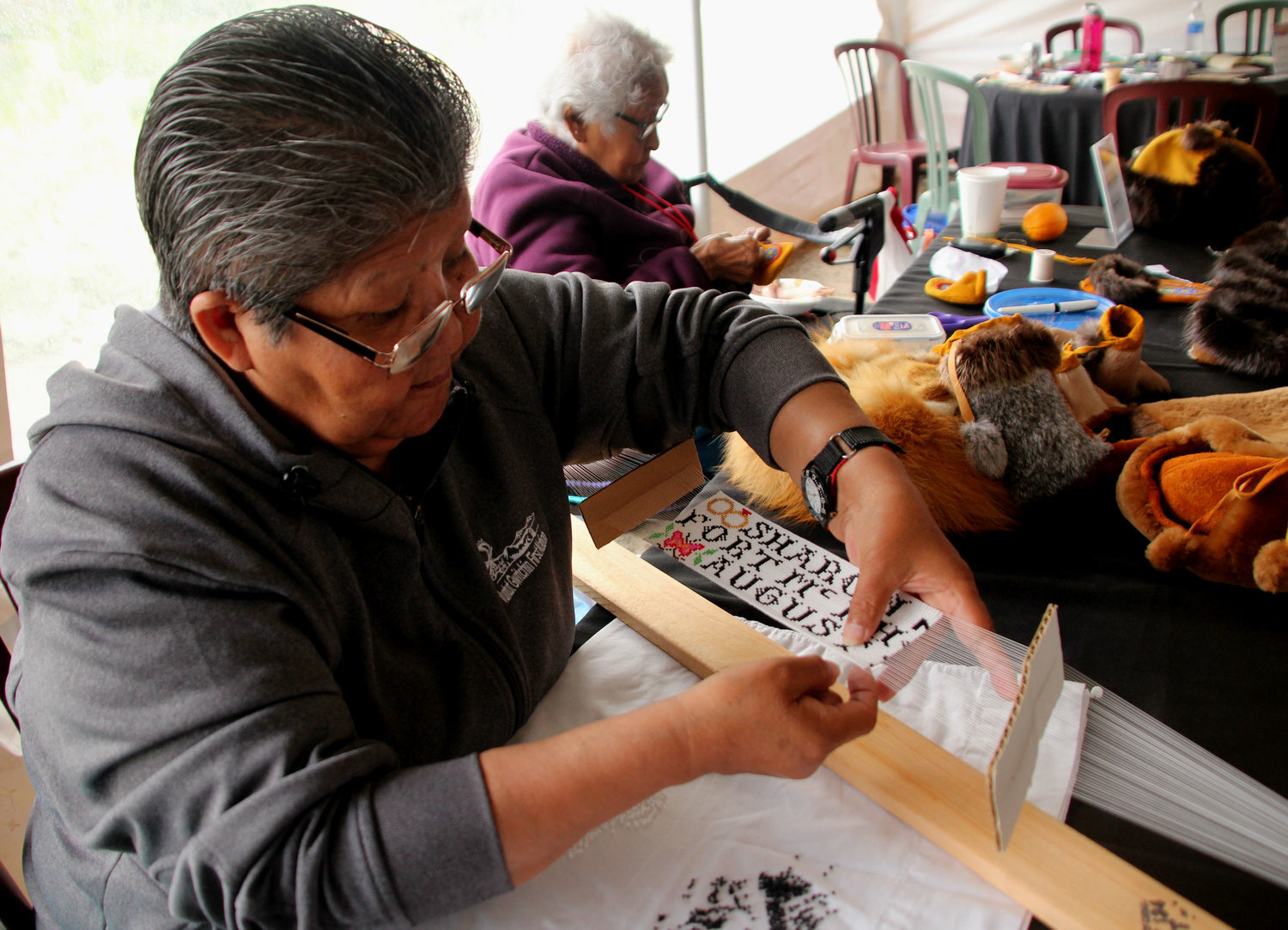Sewing: One woman’s journey to healing
Astara van der Jagt
Shirley Kakfwi started crafting little necklaces when she was eight years old, mostly out of boredom at residential school. There were no games or cellphones at the time. Even if they had existed, Kakfwi says, First Nations children would not have been allowed to use them anyway. She is now able to sew almost anything: slippers, vests, knife holders, moccasins and more. “Although it requires a lot of patience, sewing is my passion now.”
If Kakfwi makes a mistake with the number or colour of beads she needs for a pattern, she sees it immediately, often even before she sticks them in between the strings. “You make a mistake? You fix it right away,” she says sternly, pointing with her index finger. “You do not leave it.”
Kakfwi used to cut down Willow trees to make weaving looms. She would ensure that the height was about five centimetres, and the length and width varied depending on her craft projects. She would then “bend it like bone marrow,” and use pieces of cardboard on the threads for stability while weaving.
Sewing has become more than a pastime for Kakfwi. It does get tiring, but she considers it a good day when she wakes up at 7 a.m., has a sip of coffee and starts sewing.
Kakfwi, who lives in Old Crow, has a son and a daughter. She doesn’t see her son often because he lives in Edmonton with his family. She says while her daughter lives in Old Crow, she has no interest in learning to sew from her mom. “I won’t force her to learn. I’d just be waiting for nothing.”
When Kakfwi is in Whitehorse, she goes to the Indian Craft Shop Ltd. downtown to buy her beads. She says she always knows exactly which colours she wants.
As much as she can, she will take beads back to Old Crow with her. The price of beads and everything else, including groceries, is at least twice as much as it is in Whitehorse, Kakfwi says. She already sent groceries to her family.
Kakfwi says that even if she does not sell any of her sewed gadgets at the Adäka Cultural Festival, there are people in Old Crow waiting for her to get back to buy them. More than anything, she says she is excited to see her three grandchildren. Kakfwi made the baby belt pictured above for the youngest, who is just two. She says her eldest granddaughter has expressed several times that she wants to be taught to sew by her grannie. “I don’t miss them. They’re waiting for me,” Kakfwi says with a wide smile.
“I was very much traumatized by it [residential school]. I would never let my children or grandchildren be taken away forcibly. Never. Sewing helps me get on with my life,” Kakfwi says.









![“I was very much traumatized by it [residential school]. I would never let my children or grandchildren be taken away forcibly. Never. Sewing helps me get on with my life,” Kakfwi says.](https://images.squarespace-cdn.com/content/v1/60ba769d0708692f8ac9cdf7/1626542353162-O66VJ8LR9IYAQTE1Q157/residential+school+stories.jpeg)